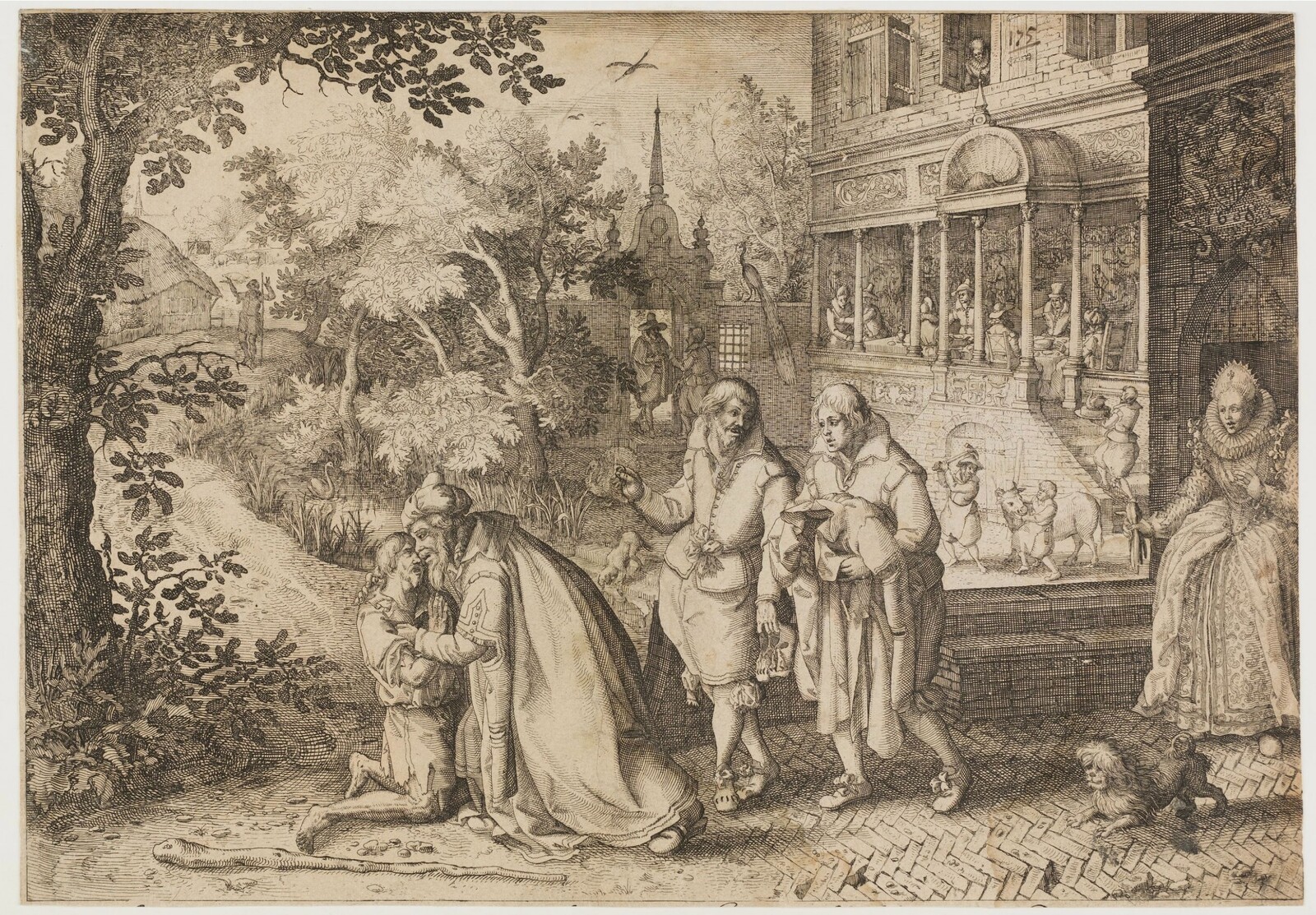Claes Jansz. Visscher after David Vinckboons I
The return of the Prodigal Son
Engraving on paper : 222 X 318 mm
Unsigned
Göttingen, Georg-August-University, Graphic Collection
This is a comparative item

Painting for Sale
Vinckboons, David I
"Jephthah’s daughter greeting her father on his return"
In short
David Vinckboons I was a highly influential painter who introduced the Flemish Late Mannerist, Early Baroque style in Dutch landscape painting. Our painting dates from his mature period, that is from after 1610.
The story of Jephthah is told in the Ancient Testament. In return for victory at war he had promised God he would sacrifice whatever creature would first come out of the door of his house at his homecoming. Sadly, he was not greeted by a pet animal, but by his sole child, his daughter.
About David Vinckboons I
Dutch painter of Flemish origin
Mechelen (Malines)1576 – 1632 Amsterdam
Important painter, draughtsman and engraver of landscapes, peasant scenes and genre scenes; he also painted and engraved just a few religious scenes.
Vinckboons was the son and pupil of Philip I (1545 – 1601), who was a water colour painter. In his turn David I was the master of his two sons, Philips II (1607/08 – 1678) and David II (1622/23 – 1679). He also had other, more important pupils: Hendrick Avercamp, Gillis Claesz. de Hondecoeter, Jacques van der Wyhen and probably Esaias van de Velde.
Soon after David’s birth, in 1579, his father moved with his family from Mechelen to Antwerp. When David was ten years old they moved again in 1586 to Middelburg in Zeeland where they stayed until 1591, when they finally settled in Amsterdam. David remained here all his life.
Although David I must have received a Protestant education he married a Catholic woman, the daughter of a rich notary, in 1602 in Leeuwarden. Their children (probably ten) received a Catholic education.
David’s son Philips II (1607/08 – 1678) painted at least until 1637, but he finally became an important architect in Amsterdam. He is said to have been the inventor of the typical Amsterdam narrow Classicist canal house.
About the subject of our painting
Jephthah was a biblical figure from the Ancient Testament. He appears in the so-called Book of Judges, presiding as a Judge over Israel during six years. Before leaving his home in Gilead for battle against the Ammonites (who lived in present-day Jordan) Jephthah had made a vow to God that, in return for victory, he would sacrifice whatever would come out of the door of his house at his return. He thought of course this would be an animal, but at his utter surprise he was greeted by his only child, his unnamed daughter, who came to meet her father dancing and playing a tambourine. At her sight Jephthah tore his clothes in despair (Judges 11: 34-35). Two months later he sacrificed his daughter.
In his early years Vinckboons painted long, tender, typically Mannerist figures with small heads. From circa 1610 his figures receive rounder faces, as can be seen here.
Why should you buy this painting?
Because Vinckboons has rapidly sketched this dramatic subject with a lot of Antwerp flair and Baroque spirit.
Comparative paintings
Click photos for more details











